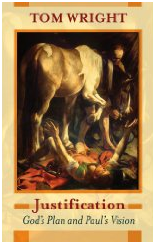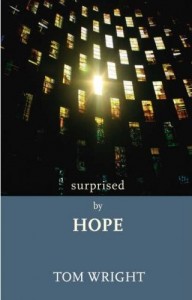Q&A: As an Anglican, what do you believe [about the intermediate state]?
Hi Will,
Growing up, I was taught that when a person dies they go directly to heaven or hell. Of course the biblical teachings of the “resurrection of life” and the “resurrection of damnation” seem to contradict this view. To overcome this discrepancy, as I am aware, some teach that the resurrection only involves the physical body and that the dead, prior to their resurrection, are consciously aware and living in “spirit”. This teaching, to my understanding, is not cohesive with Scripture in it’s entirety, and in a number of instances I find it completely incompatible, both in it’s application and to the very nature of God.
I believe the bible is very clear on the matter – The dead know nothing. Unconsciously, ceasing to be, until Jesus resurrects us from the dead. – When we consider the application it truly is remarkable – for within a state of unconsciousness time is no more. Between death and the resurrection is like a “blink of an eye” – and – we all are brought to God at the same time. A remarkably beautiful reunion.
I am curious. As an Anglican, what do you believe?
Thanks
Hi Anon and thanks for the question. This is the topic of the Intermediate State and is a subject that has received much debate over the years/centuries.
You specifically ask me “as an Anglican” so I’ll start there.
The 39 articles are not particularly attentive to the “Intermediate State” but they do reject the form of it that is clearly extra-biblical, and that is the concept of purgatory around which a Roman Catholic sacramental system was cemented. Article XXII clearly states that purgatory is “a fond thing vainly invented, and grounded upon no warranty of Scripture, but rather repugnant to the Word of God.” In all that I talk about below I am not talking about purgatory.
The 1662 Book of Common Prayer includes much eschatological language and expressions of eternal hope – these do not interact with the question at hand because they allude to the final state. We must note, however, that in the intermediate time the BCP draws upon a framework of “Christ’s Church militant here in earth” and the “Church Triumphant” who in some sense are present with Jesus. And so we see, for instance:
The glorious company of the Apostles : praise thee.
The goodly fellowship of the Prophets : praise thee.
The noble army of Martyrs : praise thee.
The holy Church throughout all the world : doth acknowledge thee— Te Deum Laudamus, Morning Prayer
THEREFORE with Angels and Archangels, and with all the company of heaven, we laud and magnify thy glorious Name; evermore praising thee, and saying, Holy, holy, holy, Lord God of hosts, heaven and earth are full of thy glory: Glory be to thee, O Lord most High. Amen
— Preface in Communion
We meekly beseech thee, 0 Father, to raise us from the death of sin unto the life of righteousness; that, when we shall depart this life, we may rest in him, as our hope is this our brother doth; and that, at the general Resurrection in the last day, we may be found acceptable in thy sight; and receive that blessing, which thy well-beloved Son shall then pronounce to all that love and fear thee, saying, Come, ye blessed children of my Father, receive the kingdom prepared for you from the beginning of the world: Grant this, we beseech thee, 0 merciful Father, through Jesus Christ, our Mediator and Redeemer. Amen.
— Collect in Holy Burial
Language such as this implies an intermediate state, associates it with rest and peace and worship – but does not equate it with the culmination of the kingdom or the ultimate resurrection. This is in line with more recently espoused Anglican theology such as that of N. T. Wright (I reviewed the book of his that most engages with this topic) who decries an escapist framework whereby the gospel is couched in terms of departing to heaven when we die, rather than in terms of seeing the Kingdom of God come to this earth in its fullness when we are raised from the dead. N. T. Wright’s framework only holds together exegetically if some passages of Scripture are seen to be referring to the ultimate resurrection and other passages are seen to be referring to an intermediate state.
You say “the bible is very clear on the matter.” It would be helpful if you could point me to the parts of the Bible which you draw on to provide that clarity. It’s hard to engage otherwise.
There are certainly parts of Scripture that do seem to clearly imply an intermediate state. From the fact that Samuel can appear before the witch of Endor, and the framework undergirding the parable of Lazarus and the Rich Man, to affirmations from Jesus that the thief on the cross will be with him that day in paradise, and references to a great cloud of saintly witnesses.
I have certain degree of sympathy with your view, and recognise its beauty. I have a friend, a mechanical engineer, who suggests that in the intermediate state time is shaped as a parabola so that no matter at what point you enter it you get to the end at the same time – we, who die before the parousia, all arrive together to accompany the bridegroom to collect his bride. That too, has beauty.
In the end, I am comfortable with a post-death pre-resurrection form of existence as the church triumphant celebrates and awaits the fullness of the Kingdom of God. But whatever the viewpoint, the eventual promise is the same, and that is what is at the heart of the gospel.


 Anonymous asks:
Anonymous asks:





